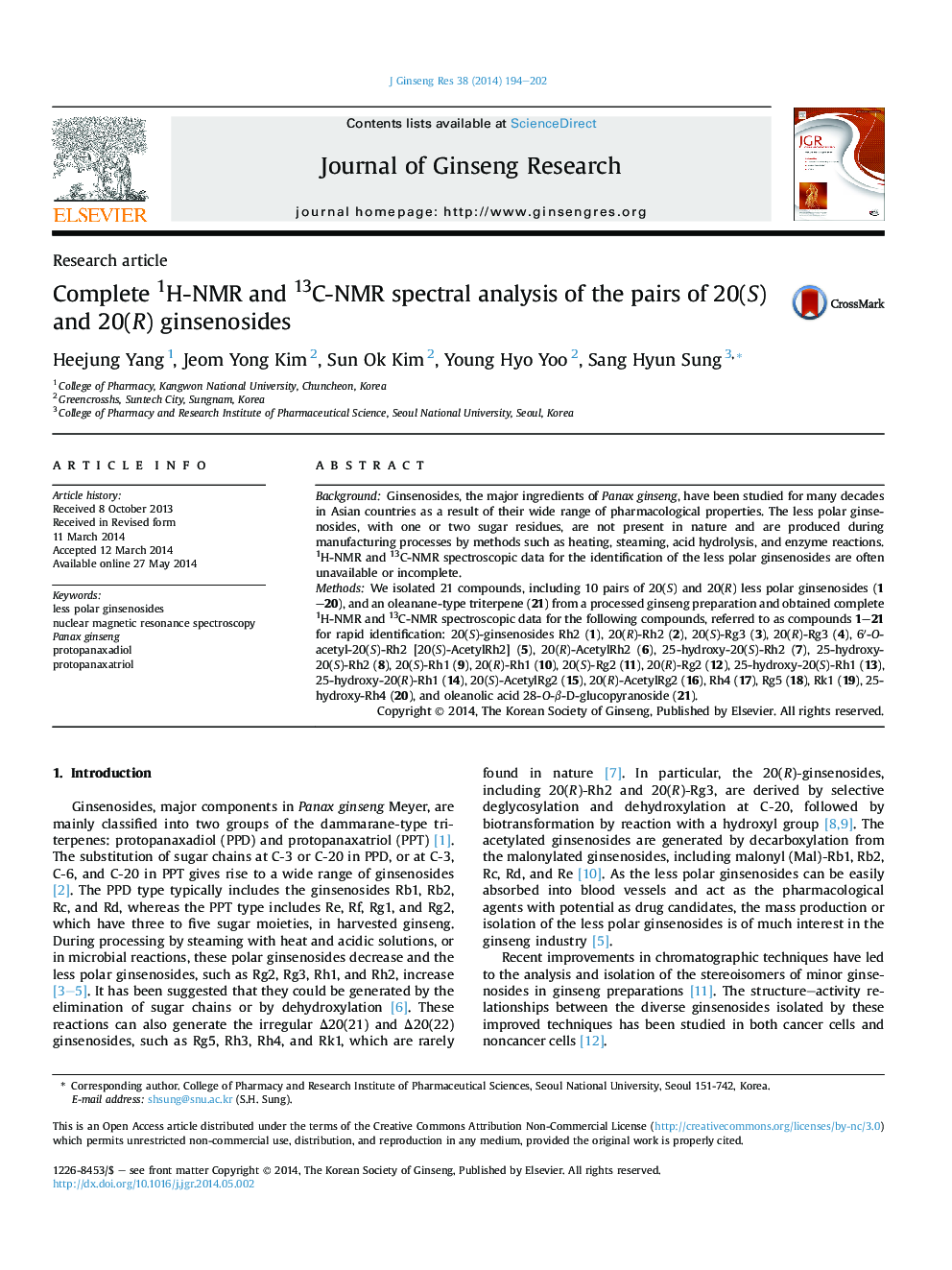| Article ID | Journal | Published Year | Pages | File Type |
|---|---|---|---|---|
| 3099281 | Journal of Ginseng Research | 2014 | 9 Pages |
BackgroundGinsenosides, the major ingredients of Panax ginseng, have been studied for many decades in Asian countries as a result of their wide range of pharmacological properties. The less polar ginsenosides, with one or two sugar residues, are not present in nature and are produced during manufacturing processes by methods such as heating, steaming, acid hydrolysis, and enzyme reactions. 1H-NMR and 13C-NMR spectroscopic data for the identification of the less polar ginsenosides are often unavailable or incomplete.MethodsWe isolated 21 compounds, including 10 pairs of 20(S) and 20(R) less polar ginsenosides (1–20), and an oleanane-type triterpene (21) from a processed ginseng preparation and obtained complete 1H-NMR and 13C-NMR spectroscopic data for the following compounds, referred to as compounds 1–21 for rapid identification: 20(S)-ginsenosides Rh2 (1), 20(R)-Rh2 (2), 20(S)-Rg3 (3), 20(R)-Rg3 (4), 6′-O-acetyl-20(S)-Rh2 [20(S)-AcetylRh2] (5), 20(R)-AcetylRh2 (6), 25-hydroxy-20(S)-Rh2 (7), 25-hydroxy-20(S)-Rh2 (8), 20(S)-Rh1 (9), 20(R)-Rh1 (10), 20(S)-Rg2 (11), 20(R)-Rg2 (12), 25-hydroxy-20(S)-Rh1 (13), 25-hydroxy-20(R)-Rh1 (14), 20(S)-AcetylRg2 (15), 20(R)-AcetylRg2 (16), Rh4 (17), Rg5 (18), Rk1 (19), 25-hydroxy-Rh4 (20), and oleanolic acid 28-O-β-D-glucopyranoside (21).
